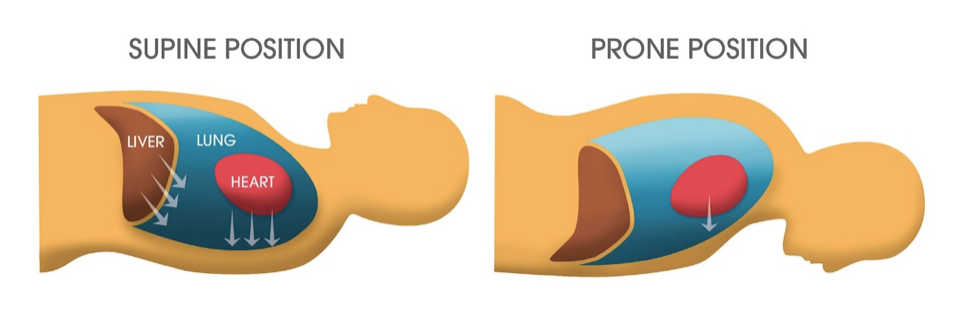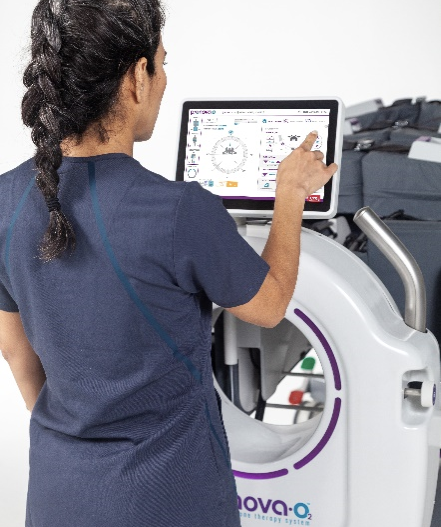Why is the supine position harmful for ventilated patients?

Compression of the Lung
In the supine position, the weight of the heart and abdominal organs compresses the lung, increasing the risk for hypoxemia and ventilator-induced injury.
Impaired Oxygen and Carbon Dioxide Exchange
The greatest distribution of blood flow is in the dependent (back) area of the lung. Unfortunately for patients with respiratory failure in the supine position, this area is not only compressed but can be filled with fluid. The lungs are then unable to exchange oxygen and carbon dioxide, which contributes to worsening hypoxemia and pulmonary shunt.

Prone positioning has been a successful treatment for respiratory distress for many years and has several potential benefits, including oxygenation improvement and decreased mortality.
The Pronova-O2 Automated Prone Therapy System provides a safe and efficient method for positioning critically ill patients. For additional information on Pronova-O2, or to preorder, please visit turnmedical.com or call 1-855-275-8876.
Reference
Malhotra, Atul. (Sept 2021). Prone ventilation for adults with acute respiratory distress syndrome. Up to Date. Retrieved October 5, 2021, https://www.uptodate.com/contents/prone-ventilation-for-adult-patients-with-acute-respiratory-distress-syndrome#H5






